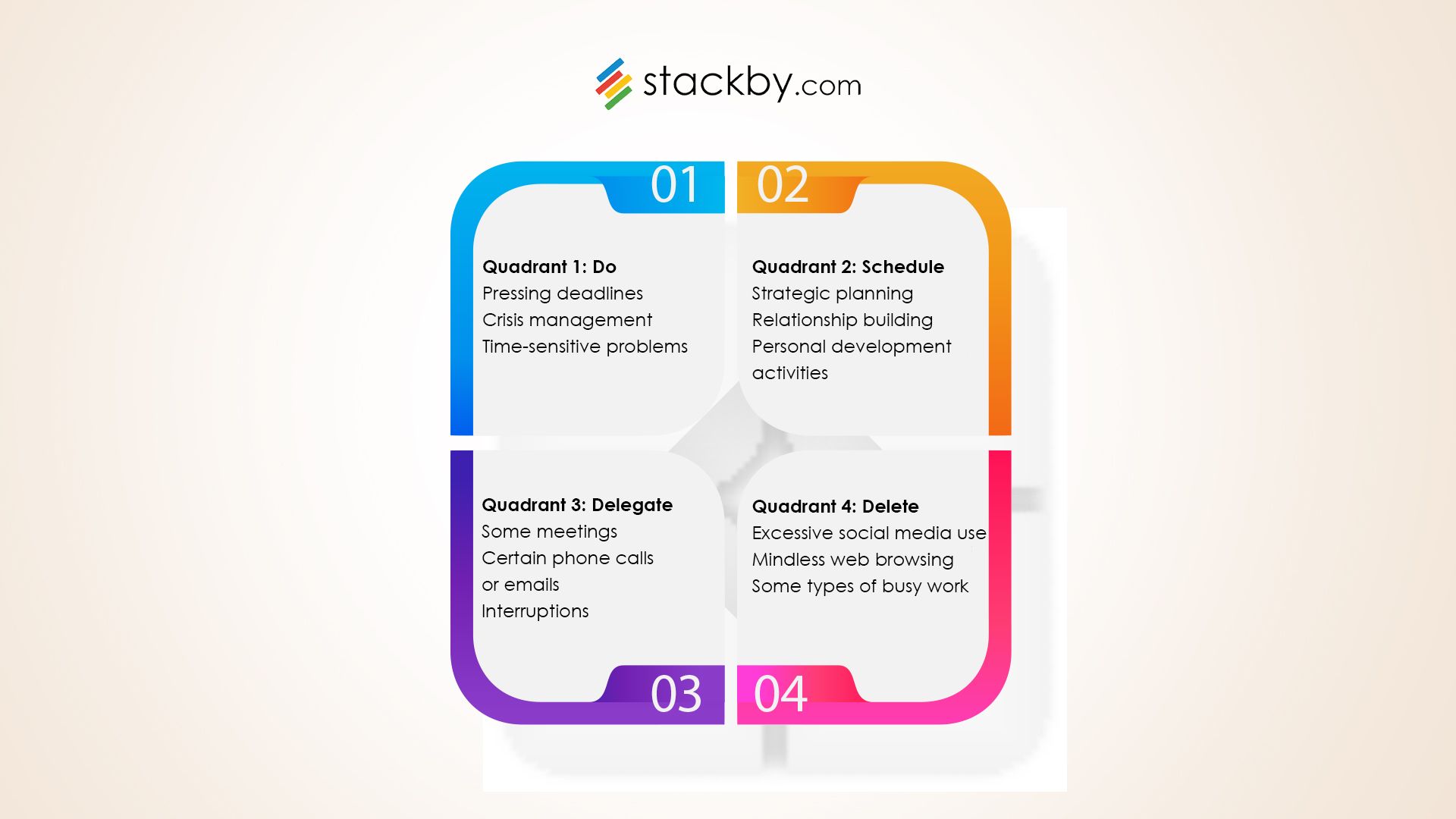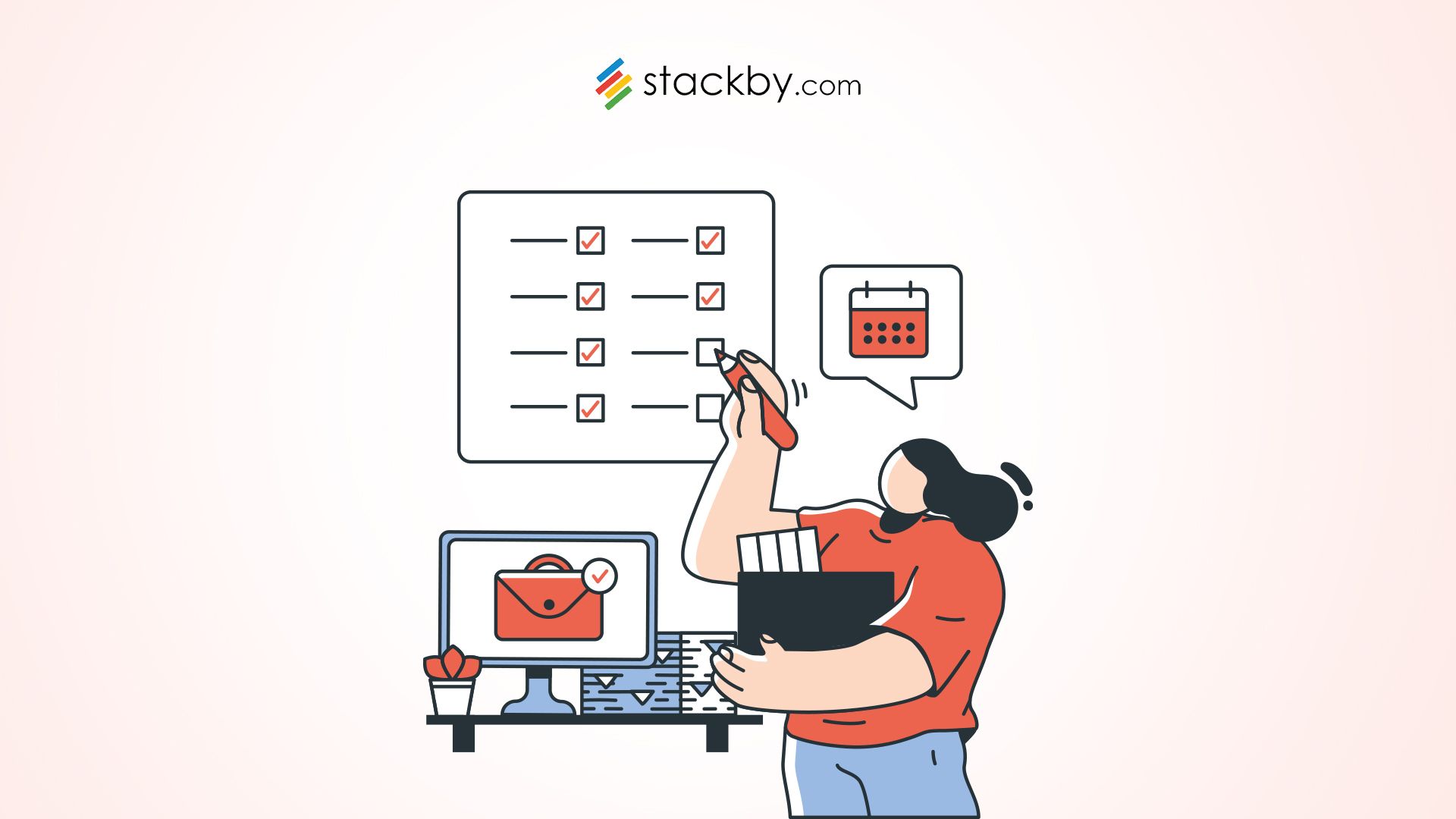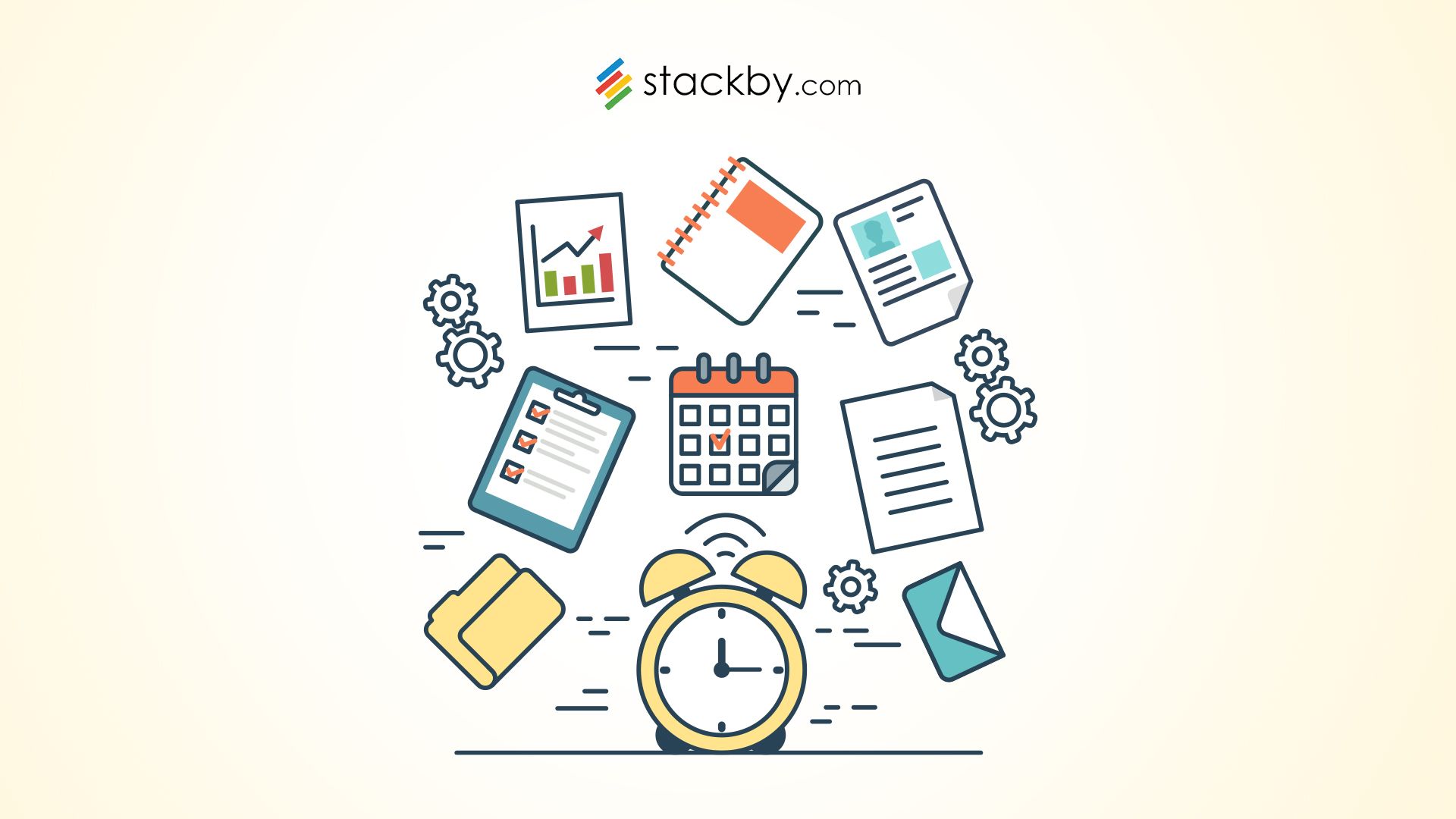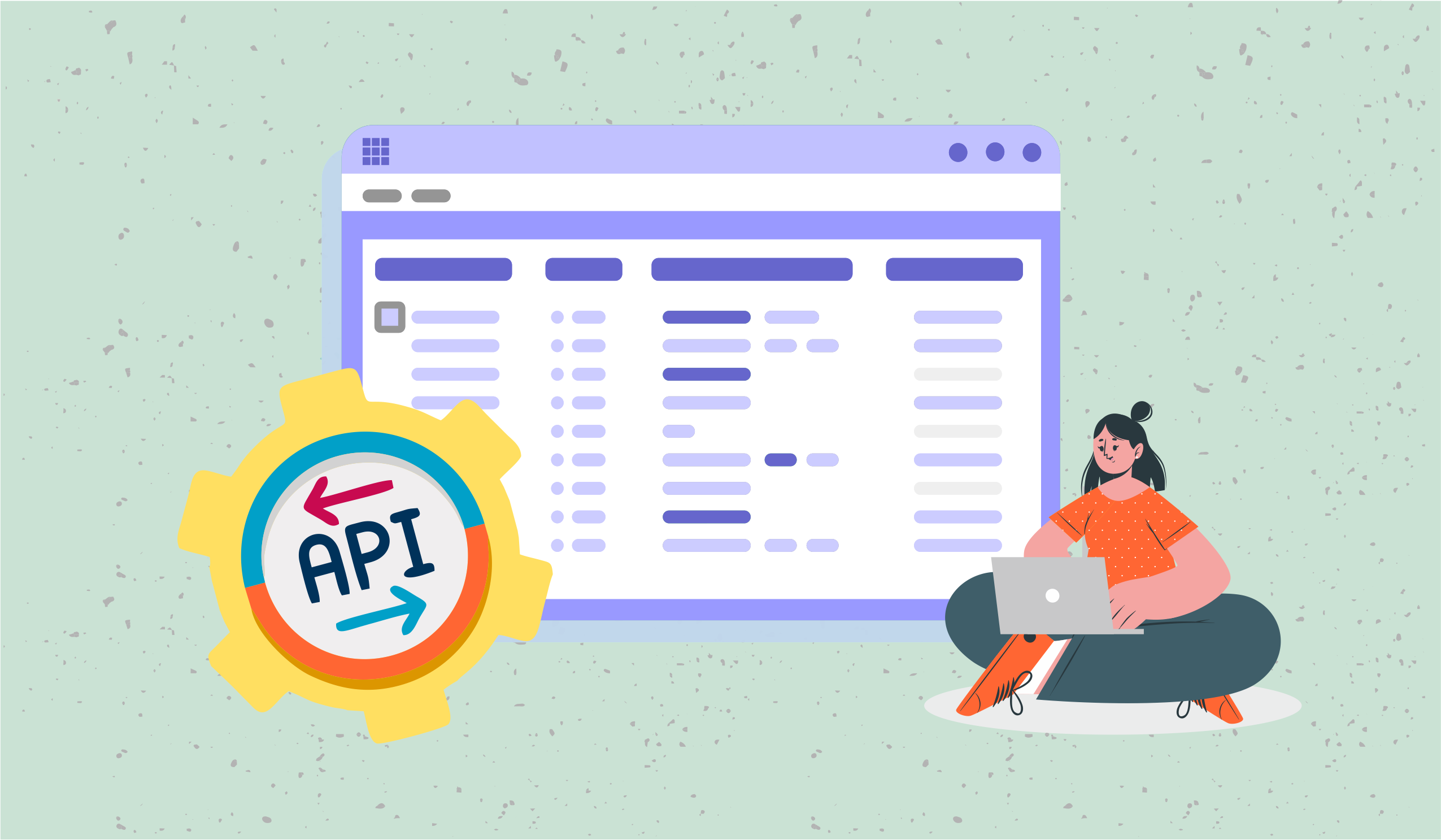The Eisenhower Matrix: How to Prioritize Your To-Do List Like a Pro
Learn how to prioritize tasks effectively using the Eisenhower Matrix. Master time management and boost productivity with this simple, proven tool.

Are you struggling to manage your daily tasks? The Eisenhower Matrix might be just what you need. This simple tool can help you sort out what's truly important from what just seems urgent. Whether you're a busy professional, a student with lots of assignments, or anyone trying to get more organized, the Eisenhower Matrix can make your life easier.
What is the Eisenhower Matrix?
The Eisenhower Matrix, also known as the Urgent-Important Matrix, is a time management tool that helps you prioritize tasks based on their urgency and importance. Named after Dwight D. Eisenhower, the 34th President of the United States, this matrix has become a cornerstone of effective task management and productivity enhancement.
At its core, the Eisenhower Matrix is a simple yet powerful concept that divides tasks into four quadrants, allowing you to make quick decisions about what to focus on, what to schedule for later, what to delegate, and what to eliminate.
Difference Between Important Tasks and Urgent Tasks
Before diving into the quadrants of the Eisenhower Matrix, it's crucial to understand the distinction between important and urgent tasks:
- Important tasks are those that contribute to your long-term goals, values, and priorities. They may not require immediate attention but are crucial for personal or professional growth.
- Urgent tasks demand immediate attention and are often associated with achieving someone else's goals. They are time-sensitive but may not always align with your personal objectives.
Understanding this difference is key to using the Eisenhower Matrix effectively and achieving better time management.
The 4 Quadrants of the Eisenhower Matrix
The Eisenhower Matrix is divided into four quadrants, each representing a different approach to task management:

Quadrant 1: Do
Tasks in this quadrant are both urgent and important. These are your top priorities that require immediate attention. Examples include:
- Pressing deadlines
- Crisis management
- Time-sensitive problems
When using an Eisenhower Matrix template, these tasks should be tackled first and given your full attention.
Quadrant 2: Schedule
This quadrant contains tasks that are important but not urgent. These activities contribute to your long-term goals and personal development. Examples include:
- Strategic planning
- Relationship building
- Personal development activities
When using an Eisenhower Matrix planner, schedule these tasks for later, but make sure to allocate time for them regularly.
Quadrant 3: Delegate
Tasks in this quadrant are urgent but not important. They often involve helping others achieve their goals at the expense of your own. Examples include:
- Some meetings
- Certain phone calls or emails
- Interruptions
When working with an Eisenhower Matrix worksheet, identify tasks that can be delegated to others, freeing up your time for more important activities.
Quadrant 4: Delete
The final quadrant contains tasks that are neither urgent nor important. These are often time-wasters that don't contribute to your goals. Examples include:
- Excessive social media use
- Mindless web browsing
- Some types of busy work
When using an Eisenhower Matrix tool, be ruthless in eliminating or minimizing time spent on these activities.
4 Tips & Tricks for Prioritizing Your Tasks

Implementing the Eisenhower Matrix effectively requires more than just understanding the quadrants. Here are some practical tips to enhance your task prioritization:
1. Use Color or Code for Your Tasks
Visual cues can make your Eisenhower Matrix more effective. Consider using a color-coding system in your Eisenhower Matrix template like Excel or Google Sheets:
- Red for Urgent & Important (Do)
- Yellow for Important but Not Urgent (Schedule)
- Green for Urgent but Not Important (Delegate)
- Blue for Not Urgent & Not Important (Delete)
This visual approach makes it easier to quickly identify task priorities at a glance.
2. Make a To-Do List
Before populating your Eisenhower Matrix, create a comprehensive to-do list. This brain dump helps ensure you're not forgetting any tasks and provides a full picture of your responsibilities.
3. Limit Your Tasks to 10 Per Quadrant
Overloading your Eisenhower Matrix can be counterproductive. Aim to limit each quadrant to no more than 10 tasks. This constraint forces you to really think about the importance and urgency of each item.
4. Eliminate, Then Prioritize
Before diving into prioritization, take a hard look at your tasks and eliminate anything unnecessary. This step aligns with the "Delete" quadrant and ensures you're not wasting time prioritizing tasks that shouldn't be on your list in the first place.
Use Eisenhower Matrix Template Free to Manage Your Tasks More Easily
While you can create an Eisenhower Matrix on paper or in a spreadsheet, using a dedicated digital template can significantly enhance your productivity. Stackby offers a free Eisenhower Matrix template that combines the simplicity of the original concept with the power of digital tools.
How to Use the Eisenhower Matrix Template
- Access the Template: Start by accessing Stackby's free Eisenhower Matrix template.
- Add Your Tasks: Input all your tasks into the appropriate quadrants.
- Set Priorities: Use the template's features to set priority levels within each quadrant.
- Track Progress: Utilize the built-in tracking features to monitor task completion.
- Review and Adjust: Regularly review your matrix and adjust task positions as needed.
For a complete library of productivity templates, visit the Stackby templates page.
Benefits of Using a Digital Eisenhower Matrix Template

- Accessibility: Access your matrix from any device, anytime.
- Easy Updates: Quickly add, modify, or delete tasks as your priorities change.
- Integration: Connect with other productivity tools for a seamless workflow.
- Collaboration: Share your matrix with team members for better coordination.
- Analytics: Gain insights into your task management patterns over time.
How to Create a Free Digital Eisenhower Matrix Template With Stackby

While the concept of the Eisenhower Matrix is simple, implementing it effectively can be challenging without the right tools. That's where a digital Eisenhower Matrix template comes in handy. Stackby offers a free, customizable Eisenhower Matrix template that combines the simplicity of the original concept with the power of modern digital tools.
This digital template takes the guesswork out of creating your matrix and allows you to focus on what really matters - prioritizing and completing your tasks. It's like having a personal assistant that helps you organize your to-do list, but without the cost.
The Stackby Eisenhower Matrix template is designed to be user-friendly, even if you're not tech-savvy. It provides a clear, visual representation of your tasks, making it easy to see at a glance where you should be focusing your energy. Plus, being digital means you can access and update your matrix from anywhere, at any time.
How to Use the Eisenhower Matrix Template
Getting started with the Stackby Eisenhower Matrix template is straightforward. Here's a step-by-step guide:
Access the Template:
- Go to Stackby's template library and select the Eisenhower Matrix template.
- Click on "Use Template" to add it to your workspace.
Add Your Tasks:
- Start by listing all your tasks in the "All Tasks" table.
- For each task, fill in details like task name, description, due date, and assigned person.
Categorize Your Tasks:
- Use the "Urgency" and "Importance" fields to categorize each task.
- The template will automatically sort your tasks into the appropriate quadrants based on your input.
Set Priorities:
- Within each quadrant, you can further prioritize tasks using the "Priority" field.
- This helps you focus on the most critical tasks within each category.
Track Progress:
- Use the "Status" field to track the progress of each task.
- You can easily see which tasks are pending, in progress, or completed.
Review and Adjust:
- Regularly review your matrix, ideally at the start of each day or week.
- Move tasks between quadrants as their urgency or importance changes.
- Delete or archive completed tasks to keep your matrix current.
Remember, the key to success with the Eisenhower Matrix is consistent use and regular updates. Make it a habit to check and update your matrix daily for the best results.
Benefits of Using a Digital Eisenhower Matrix Template
Switching from a paper-based system to a digital Eisenhower Matrix template like the one offered by Stackby comes with numerous advantages:
Accessibility:
- Access your matrix from any device with an internet connection.
- No more forgetting your planner at home or the office.
Easy Updates:
- Quickly add, modify, or delete tasks as your priorities change.
- No messy erasures or rewriting entire lists.
Automated Sorting:
- The template automatically sorts tasks into the correct quadrants based on your input.
- Saves time and reduces the chance of misclassification.
Visual Clarity:
- Get a clear, color-coded view of your tasks across all four quadrants.
- Easily identify which areas need more attention.
Integration with Other Tools:
- Connect your Eisenhower Matrix with other productivity tools for a seamless workflow.
- Import tasks from your email, calendar, or project management software.
Collaboration Features:
- Share your matrix with team members for better coordination.
- Assign tasks to others directly from the matrix.
Data Analysis:
- Gain insights into your task management patterns over time.
- Identify trends in how you spend your time and where you might need to improve.
Customization Options:
- Tailor the template to fit your specific needs and preferences.
- Add custom fields, change colors, or modify layouts as needed.
Reminder System:
- Set up automated reminders for important tasks.
- Never miss a deadline again.
Historical Record:
- Keep a record of completed tasks for reference or reporting purposes.
- Track your productivity and achievements over time.
By leveraging these benefits, you can turn the Eisenhower Matrix from a simple prioritization tool into a comprehensive productivity system.
How to Create a Free Digital Eisenhower Matrix Template With Stackby
While Stackby offers a pre-built Eisenhower Matrix template, you might want to create a custom version tailored to your specific needs. Here's how you can create your own Eisenhower Matrix template in Stackby:
Start with a Blank Stack:
- Create a new stack in your Stackby workspace.
- Name it "My Eisenhower Matrix" or something similar.
Set Up Your Columns:
- Create columns for Task Name, Description, Due Date, Assigned To, Urgency, Importance, Status, and Priority.
- Use the 'Single Select' type for Urgency, Importance, Status, and Priority fields for easy categorization.
Create Views for Each Quadrant:
- Set up four different views: Do, Schedule, Delegate, and Delete.
- Use filters to show only the tasks that belong in each quadrant.
Add Conditional Formatting:
- Use conditional formatting to color-code tasks based on their quadrant or priority level.
- This provides a quick visual reference for task importance.
Integrate with Other Apps:
Connect your Eisenhower Matrix with other apps you use regularly. Some useful integrations include:
- Gmail: Import tasks directly from your emails.
- Outlook: Sync your matrix with your calendar events.
- Slack: Collaborate with team members and receive notifications.
- Google Workspace: Integrate with your existing documents and spreadsheets.
Set Up Automations:
- Create automations to streamline your workflow.
- For example, set up an automation to move overdue tasks to the "Urgent" category automatically.
Customize Your Dashboard:
- Create a dashboard that gives you an overview of all your tasks across different quadrants.
- Add charts or graphs to visualize your task distribution.
Test and Refine:
- Start using your custom template and make adjustments as needed.
- Don't be afraid to experiment with different layouts or additional fields to find what works best for you.
Remember, the goal is to create a tool that enhances your productivity, not complicates it. Start with the basics and gradually add more features as you become comfortable with the system.
By following these steps, you can create a powerful, personalized Eisenhower Matrix that fits seamlessly into your workflow. With Stackby's flexibility and robust features, your digital Eisenhower Matrix can evolve with your needs, helping you stay organized and focused on what truly matters.
Conclusion
In a world where time is our most precious resource, the Eisenhower Matrix stands out as a beacon of efficiency and clarity. By adopting this powerful tool, you're not just organizing tasks – you're reshaping your approach to time management and personal productivity.
Remember, the true power of the Eisenhower Matrix lies not just in its simplicity, but in its ability to make you think critically about how you spend your time. It challenges you to distinguish between what's truly important and what's merely urgent, pushing you towards a more balanced and fulfilling approach to work and life.
As you embark on your journey with the Eisenhower Matrix, whether using a simple paper-based system or leveraging the power of digital tools like Stackby's free template, keep in mind that perfection isn't the goal. The aim is progress – consistently making better decisions about where to focus your energy and attention.
So, why not give it a try? Start small, perhaps with a weekly Eisenhower Matrix, and gradually work your way up to daily use. You might be surprised at how quickly this simple tool can transform your productivity and bring a new sense of control to your busy life.
FAQs
1. Where does the name "Eisenhower Matrix" come from?
The Eisenhower Matrix is named after Dwight D. Eisenhower, the 34th President of the United States. Eisenhower was known for his exceptional ability to sustain productivity not just for weeks, but for decades. The matrix is based on his approach to task management and decision-making.
2. Do I need the Eisenhower Matrix Template?
If you find yourself constantly overwhelmed by your to-do list or struggling to prioritize tasks effectively, the Eisenhower Matrix template can be a game-changer. It provides a structured approach to task management that can significantly improve your productivity and time management skills.
3. How frequently should I use the Eisenhower Matrix Template?
For best results, make the Eisenhower Matrix a part of your daily routine. Start each day by reviewing and updating your matrix. This practice ensures you're always focused on the most important and urgent tasks. Some users also find it helpful to do a weekly review to adjust their priorities for the coming week.

![A Simple Guide on Workflow Management Software [Updated 2026]](/blog/content/images/size/w960/2021/12/work-management-blog.png)
![Step by Step Guide on How to Build Forms in a Database [2026]](/blog/content/images/2022/03/form-database-blog.png)

